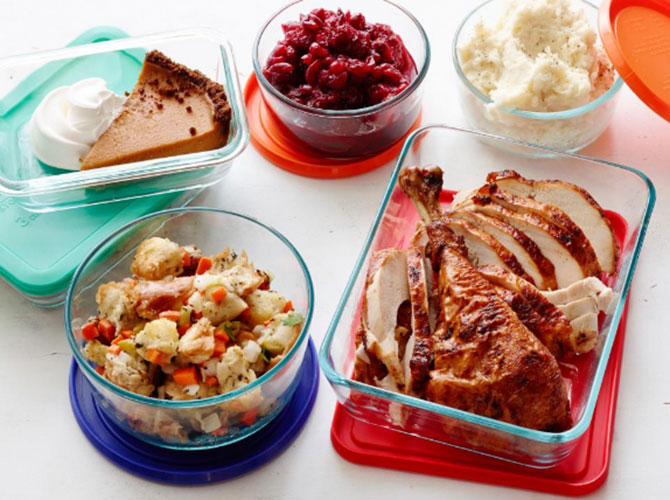
Do you recycle food leftovers?
I do as well as you. It is convenient and economical, especially if you are a live-alone senior living on a tight budget.
But there are trade-offs. Reheated foods taste differently and there are potential health risks if not done well.
The change in taste is unavoidable, but the health risks are if you follow these simple precautions.
Preparation:
Never leave leftovers for long periods of time without refrigerating them to avoid the growth of molds or the Botulinum bacteria.
How long is long, however, is a subject of contention among food and health experts.
I put my leftover food into the ref once I am done with a meal. But this need not be, or even impractical at times, especially when entertaining guests.
As a rule of thumb, foods in high bacterial growth areas should not stay more than two hours in the open – USDA (U.S. Department of Agriculture).
Notes:
– The Department added that foods left in the ref for more than four days must be discarded and leftover foods left unrefrigerated for more than four hours should be boiled for 10 mins prior serving to kill any bacteria that may have formed or spread.
The FDA (Food and Drug Administration) is more tolerant. It says that foods should not be left unrefrigerated for more than four hours at temperatures between 41 to 135 degrees F – the temperature range at which bacteria starts to grow and multiply.
That being said, wrap leftover foods in aluminum foil or a plastic sheet, put inside a Tupperware (or equivalent), then into the ref.
Large food items, i.e., a ham or turkey, must be frozen where they can last indefinitely (unless they are thawed).
Notes:
– Food should not be kept in the freezer for more than four months;
– They should be thawed 165 def F before reheating to kill any bacteria that may have formed while in hibernation.
How to reheat leftover foods:
Food leftovers can be reheated several ways, i.e., using an oven or oven toaster, a microwave oven, stove top, double boiler or a steamer.
For obvious reasons, the oven or oven toaster, or the microwave is used more often than the others.
Regardless of heating methods, however, take note that there are some foods that should not be reheated without risking your health. These are celery, spinach, beets, mushrooms, and eggs.
Their chemical compositions become toxic and harmful to your stomach if reheated.
Another point to consider before you do your next reheating gig is the oven or oven toaster is not interchangeable with the microwave. There are foods best for one than the other.
For example, these are for the oven or over toaster:
– Crusty bread can regain its crispiness after a five to 10 mins stay in the oven set at 350 def F;
– Fried or breaded foods will also get its original form from the dry heat of an oven or oven toaster;
– Baked goods like pies, muffins, tarts, etc., do not get soggy if reheated in an oven or oven toaster. Even stale cookies can be eaten after a few minutes in the oven or oven toaster.
– Roasted or grilled meat don’t get dried out or overcooked in the dry heat inside the oven;
– Seafood, if reheated under a low and slow heat can be as delicious when served the first time.
– Pizza and grilled sandwiches are best reheated in an oven or oven toaster to bring back its outside crispiness while soft and warm inside.
And these foods are best reheated using a microwave oven:
– Soups;
– Stews;
– Saute and stir-fries;
– Steamed or boiled vegetables;
– Rice, pasta, hot noodles;
– Casseroles.
The microwave is an excellent appliance to reheat leftover foods. It is fast and reheats evenly, but may dry out your food if not done properly.
When you reheat food in the microwave oven, it is necessary to spread it out evenly, then covered with a wet towel to produce a little steam. This will give your food a little bit of moisture.
My dinner always consists of food prepared for lunch. I use either an oven toaster or the microwave. If I want to savor the crustiness at lunch, I use the stove.
I don’t care so much for the change in taste. That is a minor discomfort vis-a-vis the benefits of recycling. Besides, if you eat alone, the main issue is to satisfy hunger in the most convenient and cheapest way, not enjoy the pleasures of fine dining.
Please share with other seniors so they will know how reheat foods the right way.
Image: http://www.foodnetwork.com/thanksgiving/leftovers
~oOo~
.